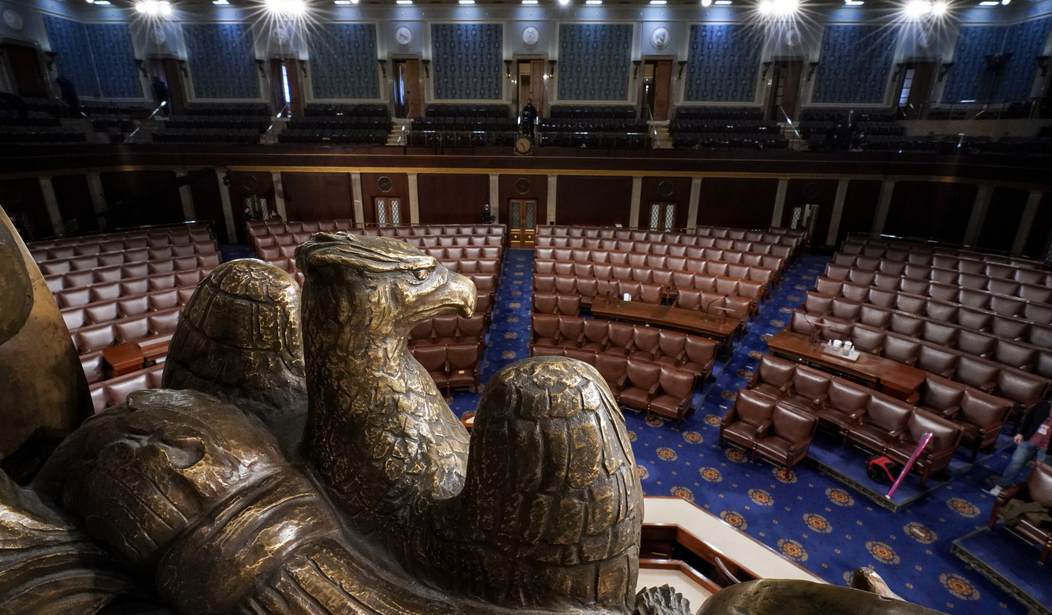Those of us who are political junkies - and if you're reading these virtual words, I'm guessing you fall into that category - love to take our shots at predicting election outcomes. It's interesting to toss around various scenarios, and it's fun when the election is over to see how close we were to being right.
We've all been wargaming the presidential election and the Electoral College, and that contest sure looks like it's hit the tipping point for the Trump/Vance ticket.
See Related: CLEAN SWEEP: Trump Claims All the Battleground States for the 1st Time in RCP Average
But wargaming the House of Representatives? That's a whole different task. The House is the most nearly democratic (small d) institution in our constitutional republic; the "People's House" is, unlike the Senate, meant to represent the states in proportion to their population, whereas the Senate was originally intended to provide equal representation for each state legislature. The result of that, though, is 435 seats in play every two years.
That's enough of a challenge to give the most astute political prognosticator gray hair. Well, my hair is already gray, except for the white parts - so I may as well take a shot at divining some possible outcomes. First, let's look at the RealClearPolitics (RCP) map.
The House of Representatives, as it stands. pic.twitter.com/IblWECao2d
— Ward Clark (@TheGreatLander) October 21, 2024
That map is telling for several reasons; it shows very plainly the political picture of the United States, with blue mostly clustered around urban areas while rural and small-town areas are mostly red. But look at the numbers based on RCP's polling averages: 196 safe, likely, or leaning Democrat, with 207 safe, likely, or leaning toward the GOP. So, like so many things, it's that gray area in the middle where control of the House will be decided. That's 32 seats; the GOP has to win 11 to have control (by a razor-thin margin) of the House, whereas the Dems have to win twice as many, 22. That seems pretty encouraging for the GOP, yes?
Maybe. Let's look at a few of those seats. First, because it's my home state, Alaska. RCP is calling that "Leans Democrat," but the latest polls paint a different picture:
Republican Nick Begich heads into the final two weeks of Alaska’s House race with a small but significant advantage over incumbent Rep. Mary Peltola in a top battleground race, according to new internal GOP polling obtained by POLITICO.
The poll, conducted by Cygnal on Oct. 14-16, found Begich leading Peltola 49.1 to 44.5 percent in the first round of voting under Alaska’s unique top-four, ranked-choice voting system. Two candidates who are less well known — Democrat Eric Hafner and Alaska Independence Party’s John Wayne Howe — take 2.4 percent and 4 percent, respectively.
It's important to note that, unlike 2022, Democrat Mary Peltola faces only one Republican challenger, along with another Democrat and the Independence Party rep. So I'm cautiously optimistic here about the odds of Mary Peltola being sent back to Bethel, where she has my best wishes for a long, healthy, happy life - out of politics. And if Nick Begich III wins, that means the GOP needs only to pick up ten more seats.
Moving on: There are five toss-up House races in California, a deep-blue state when taken as a whole - but look at that map again. The five races are CA13, CA27, CA41, CA45 and CA47. The current polling on those:
- CA13: Duarte (R) +0.4
- CA27: Garcia (R) +6.4
- CA41: No data available
- CA45: Steel (R) +4.8
- CA47: Porter (D) +3.4
If we take those at face value, when added to our Alaska guesses, that puts the GOP at 211 to the Dems remaining at 196, due to losing Alaska and picking up a toss-up in California.
There are also some toss-up House elections in the Electoral College swing states, those being Arizona, Nevada, Wisconsin, Michigan, Pennsylvania, North Carolina, and Georgia. Of the House districts in those states listed as toss-ups by RCP, there is only polling data available for two, both in the Keystone State:
- PA07: Wild (D) +2.0
- PA10: Perry (R) +7.7
Adding those to the tally puts us at GOP at 212, and the Dems at 197. But here's the thing: while polling data for these House seats is sparse, we should remember that the Trump/Vance presidential ticket is picking up steam and has pulled ahead in polling in all of the battleground seats. A lot will depend on Trump's coattails, as far as how expansive they are; if the Republicans manage to flip all of the battleground state's toss-up House seats, that puts them right at 218 for a hairline majority.
Bear in mind that the Democrats are going to pull out all the stops to win the House, and we shouldn't underestimate them.
See Related: The Mask Comes Fully Off: Liz Cheney Campaigning for House Democrats
Nate Silver and Allan Lichtman Throw Down in Catfight Over 2024 Election Predictions
Finally, party affiliation: We should note that, according to Pew Research's tally, in 2020 Democrats had a five-point advantage over the GOP in party affiliation. In 2024, that edge has evaporated, with the current tally at 49 percent Democrat or Democrat-leaning to 48 percent Republican or Republican-leaning. That has erased a considerable advantage.
If I was pinned down to hazard a guess right now, as of this writing, I'd bet on the GOP holding a 2-5 seat House majority. But predictions are notoriously hard to make, especially about the future. In a little over two weeks, we'll see how right - or wrong - I was.














Join the conversation as a VIP Member